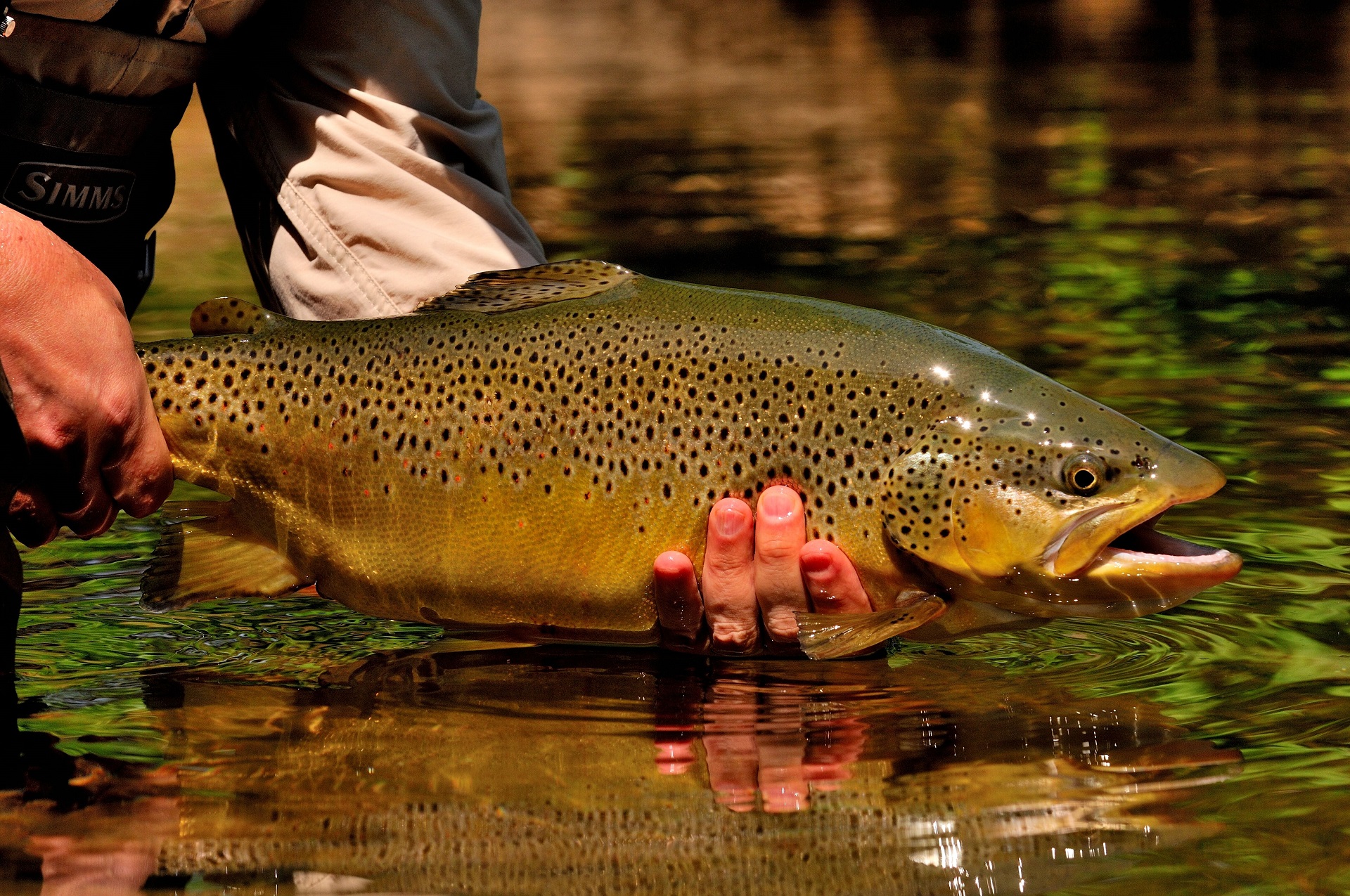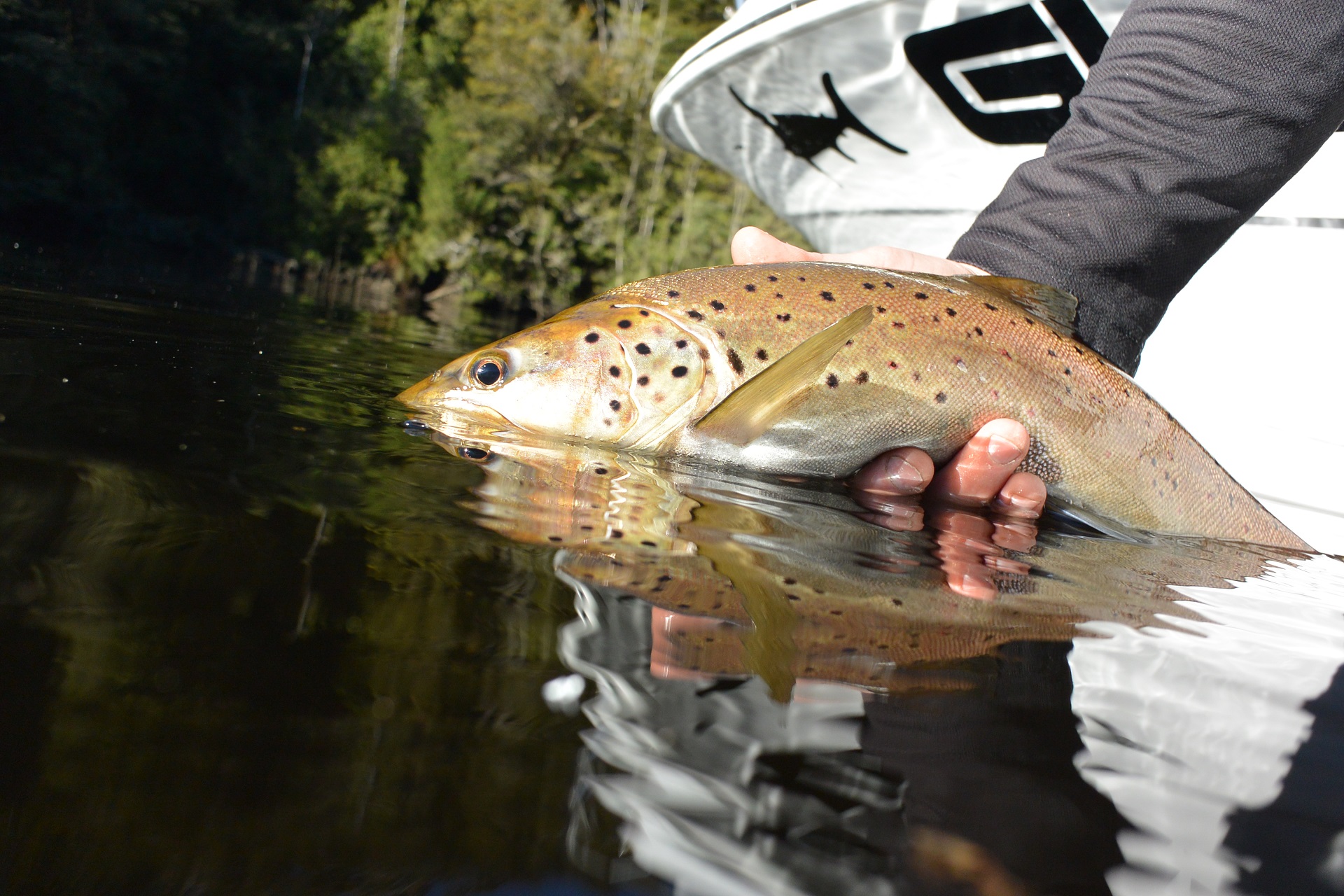| Your browser is not supported. | ||
|
Please browse our site using any of the following options:
| ||
Top Tips for Trout Fishing

Even the most experienced anglers can be sometimes left scratching their heads whilst doing their best to place the pieces of the ever-changing trout fishing puzzle together, and rightfully so. The elusive Brown Trout and wily Rainbow Trout can be difficult to fool at times, but there are key factors that can help better position yourself with the chance to achieve consistent encounters wherever you choose to target them. We've put together our top tips for catching trout on your next fishing expedition.
Perfect Conditions For Trout Fishing
Most of us are guided to the water with a rod in hand on a beautifully calm day, often with blue skies above. However, from the perspective of the cunning yet cautious trout, clear skies and still conditions scream danger as they can easily become a meal to the bird life that readily feed on the resident fish. This will inevitably see the trout go into hiding usually tucked into some weed, or an undercut bank. Bottom line is, their willingness to hunt freely is reduced and the opportunity to catch them is too.
In contrast, an overcast day matched with some wind can cause enough disturbance on the surface to eliminate any visibility a predator might have from above. This disturbance, if powerful enough, can also help to draw out food items such as yabbies, dragonfly larvae, nymphs, smelt and other microorganisms. With these two factors in mind, it's any wonder that some of the best trout fishing can be experienced in the most uncomfortable conditions and can often align with a shift in barometric pressure.
Barometric pressure is widely discussed across all aspects of fishing, and each source will share a varied perspective on the matter, so let's keep it simple. Trout are genetically wired to behave as if they are in their natural habitat, a river. A sharp drop in barometric pressure, often leading to inclement or stormy weather would naturally see river levels rise and clarity obstructed which restricts a trout's ability to feed. Therefore, trout would naturally feed before the inclement weather hits in preparation for the high-water slumber.
Picking your times to chase trout should not be governed by any rules, but instead guided by experience and opportunity. Using the above information can help you take your first steps along the pathway to successful trout fishing.

Lures For Catching Trout
Often the most confusing choice when confronted with countless options is which lure to use. The troublesome reality is that there is no perfect answer, but instead a range of opportunities to find what works best for you and your style of trout fishing. Our team at Anaconda can help guide these decisions based on your local waterway and the style of fishing best suited.
If you're new to the game, your best place to start is with the old school specials such as the Tasmanian Devil, Mapso and Spoon style lures as these have been proven trout producers for several decades, they're affordable and easy to use with a simple cast and slow retrieve method.
Once you're familiar with the traditional trout lures, the opportunities to venture into soft plastics, hardbody lures and evening surface lures are endless. One thing to keep in mind is to match the lure to the environment you're fishing in. The aim is to present the most realistic imitation of the trout's food source at the most appropriate depth, so it's important to consider the size, shape and colour. Small fish imitations such as the Ecogear MX & MW, Rapala Countdown/Original Floater, or the Squidgy Fish in natural colours are a great place to start. Sometimes a brighter colour with strong contrast may trigger an aggressive response from a fish, so it can pay to have a few options in your kit to switch things up if the trout fishing is slow.
Once you have some experience fishing a range of lures, you will become comfortable fishing particular styles, methods and/or colours. This comfort will quickly turn into confidence as you progress along your journey, providing you with a go-to lure for a range of conditions.
Where Is The Best Trout Fishing?
When choosing where to target trout, there are two main options - still waterways such as lakes or dams, and rivers. Before setting out, it is always best to check the regulations regarding the closed season and bag/size limits as they can vary from water to water. Another tip is to research historical stocking reports provided by fisheries online to grasp an understanding of the density of trout in any given waterway.
So, you've chosen a likely weather window and you have your favourite lure tied on. You arrive at the waterway and you're confronted with kilometres of shoreline or river. Take some time to observe and pick apart factors such as wind direction and fish holding structure. This will help to guide you to a likely haunt or feeding ground of the resident trout. Weed beds, rocks, drop offs, windblown edges and mud banks with yabby holes are all great features to look for in a still water. So too are the heads and tails of pools in a river or stream, or even eddy's outside of the current where food is often drawn to. Fishing these ambush points where trout can easily hunt their prey is your best chance at fooling one into striking a lure.
Over time you will begin to develop an understanding of where trout are likely to be feeding based on your encounters and time on the water, which can then be applied to other waterways as you continue to build on your understanding of how trout feed.
Behaviour of Trout
Trout can be very visual feeders, often breaking the surface to feed on baitfish and a wide range of other creatures. At first glance, this offers up an opportunity to present your lure to the fish which often leads to a rushed approach where mistakes can be made. Alternatively, taking some time to observe the nature of the action can provide valuable clues into how the trout are feeding, allowing you to present a more planned out presentation to the fish.
Trout can tell you all you need to know about how to best target them by the way in which they feed. If they move with haste in the shallows with bait flickering nearby, this is a clear indication that they are chasing the local baitfish population. In contrast, a gentle sip of the surface may indicate they're feeding on Mayfly and are best targeted on fly (for another time).
Trout can also be creatures of habit, allowing an angler with heightened awareness to pre-empt their movements, to then position oneself and their lure in the most likely locations. For example, trout can often work a beat and from a slightly elevated position can be monitored to identify where to place your lure. A good pair of polarized sunglasses from the likes of Tonic or Spotters are worth their weight in gold when observing fish in this way.
Keeping your eyes open and maintaining an acute awareness of your immediate surroundings can help increase your odds whilst targeting the elusive trout. Other times, no matter what you do, the trout can simply disappear, but that's fishing!
One final note. The most valuable piece of advice anyone can give is something you can't buy, experience. Take your time, try not to become overwhelmed, be persistent and learn along the way. Over time you will become increasingly familiar with the factors and variables involved in influencing a successful day on the water.
Drop into your local Anaconda store to share your experience and our team can help you along your trout fishing journey.